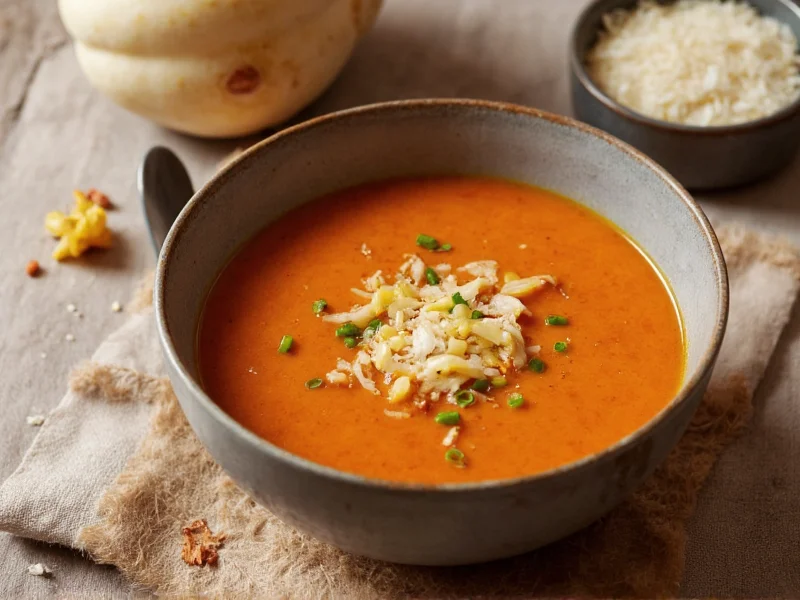As temperatures drop and leaves change color, nothing satisfies like a warm bowl of seasonal soup. Fall soups capitalize on the harvest's bounty, transforming nature's autumn offerings into comforting, flavorful meals that nourish both body and soul. The magic of fall soups lies in their ability to showcase peak-season produce at its sweetest and most flavorful.
Why Fall Soups Are Seasonal Essentials
Fall soups aren't just delicious—they're nutritionally strategic. Autumn-harvested vegetables like pumpkins, squashes, and root crops develop higher sugar content as temperatures cool, creating naturally sweeter flavors without added sugars. These vegetables also pack impressive nutritional profiles, rich in beta-carotene, vitamin C, and fiber that support immune health during seasonal transitions.
The psychological comfort of warm, aromatic soups during cooler weather shouldn't be underestimated. The process of simmering seasonal ingredients creates therapeutic kitchen aromas that engage multiple senses while providing practical nourishment. Unlike summer's light broths, fall soups benefit from longer cooking times that develop complex flavors and hearty textures perfect for cooler days.
Essential Fall Soup Ingredients
Understanding which ingredients shine during autumn makes all the difference in creating authentic seasonal soups. Here's what to look for at your local farmers' market:
| Ingredient Category | Top Fall Choices | Flavor Profile |
|---|---|---|
| Squashes & Pumpkins | Butternut, acorn, kabocha, sugar pumpkin | Sweet, nutty, earthy |
| Root Vegetables | Carrots, parsnips, turnips, beets | Earthy, sweet when roasted |
| Alliums | Shallots, leeks, sweet onions | Mellow sweetness when caramelized |
| Herbs & Spices | Sage, thyme, rosemary, cinnamon, nutmeg | Warming, aromatic, complex |
5 Exceptional Fall Soup Recipes
Roasted Butternut Squash Soup with Sage
This classic fall soup maximizes natural sweetness through roasting. Cut 2 pounds of butternut squash into 1-inch cubes, toss with olive oil, salt, and pepper, then roast at 400°F until caramelized (about 35 minutes). Sauté 1 chopped onion and 2 minced garlic cloves until soft, add roasted squash, 4 cups vegetable broth, and 1 tablespoon fresh chopped sage. Simmer 20 minutes, then blend until smooth. Finish with a touch of maple syrup and toasted pumpkin seeds.
Hearty Autumn Vegetable and White Bean Soup
Combine 1 diced sweet potato, 2 chopped carrots, 1 diced parsnip, 1 diced apple, 1 can white beans, 6 cups vegetable broth, 1 teaspoon thyme, and 1 bay leaf in a large pot. Simmer until vegetables are tender (25-30 minutes). Stir in 2 cups chopped kale during the last 5 minutes of cooking. This nutrient-dense soup provides complete protein and fiber while showcasing multiple fall harvest ingredients.
Creamy Pumpkin Soup with Spiced Croutons
For a restaurant-quality pumpkin soup, sauté 1 diced onion and 2 minced shallots in butter until golden. Add 2 cups pumpkin puree (not pie filling), 4 cups chicken or vegetable broth, 1 teaspoon cinnamon, ½ teaspoon nutmeg, and ¼ teaspoon cayenne. Simmer 15 minutes, then blend until smooth. For spiced croutons, toss cubed sourdough with olive oil, smoked paprika, and garlic powder, then bake at 375°F until crisp.
Mastering Fall Soup Techniques
The difference between good and exceptional fall soups often comes down to technique. Roasting vegetables before adding them to soups develops complex caramelized flavors that boiling cannot achieve. For squash-based soups, always roast the vegetables rather than boiling to prevent wateriness and maximize flavor concentration.
Layering flavors is crucial—start with aromatic vegetables (onions, celery, carrots), build with herbs and spices, then add liquids. For creaminess without dairy, blend cooked potatoes or cannellini beans into the soup base. Proper seasoning requires patience; add salt gradually throughout cooking, finishing with a splash of acid (lemon juice or apple cider vinegar) to brighten rich flavors.
Storage and Reheating Best Practices
Most fall soups actually improve in flavor after 24 hours as ingredients meld. Store cooled soup in airtight containers for up to 5 days in the refrigerator. For longer storage, freeze in portion-sized containers for up to 3 months. When reheating, do so gently over medium-low heat to preserve texture and flavor. Soups containing dairy should be reheated carefully to prevent curdling—add a splash of liquid and warm gradually.
Frequently Asked Questions
What vegetables are in season for fall soups?
Pumpkins, butternut squash, sweet potatoes, carrots, parsnips, beets, turnips, and celery root are all at their peak during autumn. Apples and pears also work beautifully in savory soup applications, adding natural sweetness and complexity to fall soup recipes.
How do I make my fall soup thicker without adding flour?
Natural thickeners for seasonal soups include blending cooked potatoes or beans into the soup base, reducing the liquid by simmering uncovered, or adding a small amount of cooked rice or barley which releases starch as it cooks. Roasting vegetables first also concentrates their natural pectins for a richer texture in autumn soup recipes.
Can I freeze fall soups successfully?
Most vegetable-based fall soups freeze exceptionally well for up to 3 months. Cool soup completely before transferring to freezer-safe containers, leaving 1-2 inches of headspace for expansion. Dairy-based soups may separate when frozen—add dairy after reheating for best results. Label containers with contents and date for easy identification among your seasonal soup preparations.
What protein options complement fall soups best?
For vegetarian fall soup recipes, white beans, lentils, and chickpeas add protein and heartiness. For non-vegetarian options, shredded rotisserie chicken, cooked sausage, or crispy bacon bits enhance seasonal flavors without overwhelming the soup's autumn character. Tempeh or tofu work well in plant-based autumn soup variations, absorbing surrounding flavors while providing protein.











 浙公网安备
33010002000092号
浙公网安备
33010002000092号 浙B2-20120091-4
浙B2-20120091-4